40
Joanne Tod: Replications (Dark-Haired Girls)19 October 1981
116 Spadina Avenue, 2nd Floor, Toronto
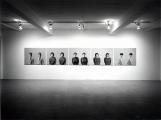 Credits:
Credits:Joanne Tod, Replications (Dark-Haired Girls), 1981. Installation view.
Photo: Peter MacCallum
41
Joanne Tod: Replications (Dark-Haired Girls)Winter 1981
Parachute
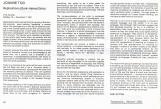 Credits:
Credits:Andy Patton, "Joanne Tod: Replications (Dark-Haired Girls)," Parachute, Winter 1981.
42
This act of exposing the image for what it really is by foregrounding the object that holds it is an act of iconoclasm. As for the most part, works exhibited at YYZ during the 80s were iconoclastic as artists were highly suspicious of images. There were several other iconoclastic devices used. W.J.T. Mitchell describes in his book What do Pictures Want? basic strategies of iconoclasm to be annihilation, disfigurement, and concealment 1. Tod and Clarkson conceal the image by bringing its objecthood to the foreground and Tod could be seen to also annihilate the image by erasing its function as a referent. Thus, they engaged in these further categories of iconoclasm. Janice Gurney's work in her exhibition Reparations uses the iconoclast tactic of disfigurement. In her Eyes Without a Face, Gurney cuts up a photograph of a face so only the area containing the eyes remains. Then she conceals the eyes with white marks. While in Portrait of Me as My Grandmother's Faults, she defaces a portrait in the same way. Interestingly, these iconoclastic tactics of disfigurement are reparations as the title suggests.1. W.J. Thomas Mitchell, What do pictures want: the lives and loves of images, (Chicago: The University of Chicago Press, 2005) 132.
43
Janice Gurney: Reparations5 March 1984
116 Spadina Avenue, 2nd Floor, Toronto
 Credits:
Credits:Janice Gurney, Reparations, exhibition invitation, 1984.
44
Janice Gurney: Reparations5 March 1984
116 Spadina Avenue, 2nd Floor, Toronto
 Credits:
Credits:Janice Gurney, Reparations, 1984. Installation view.
45
Janice Gurney: Reparations5 March 1984
116 Spadina Avenue, 2nd Floor, Toronto
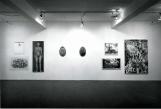 Credits:
Credits:Janice Gurney, Reparations, 1984. Installation view.
46
Janice Gurney: Reparations5 March 1984
116 Spadina Avenue, 2nd Floor, Toronto
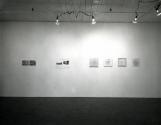 Credits:
Credits:Janice Gurney, Reparations, 1984. Installation view.
47
Janice Gurney: Reparations5 March 1984
116 Spadina Avenue, 2nd Floor, Toronto
 Credits:
Credits:Janice Gurney, Reparations, 1984. Installation view.
48
Stan Denniston's Dealy Plaza / Recognition & Mnemonic is an example of concealment and disfigurement. He places text on top of photographs of the assassination of Lee Harvey Oswald thereby disfiguring the images and, in turn, the photographs partly conceal the text.49
Stan Denniston: Deadly Plaza /Recognition & Mnemonic7 November 1983
116 Spadina Avenue, 2nd Floor, Toronto
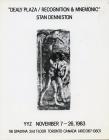 Credits:
Credits:Stan Denniston, Deadly Plaza/Recognition & Mnemonic, exhibition invitation, 1983.
50
Stan Denniston: Deadly Plaza/Recognition and Mnemonic7 November 1983
116 Spadina Avenue, 2nd Floor, Toronto
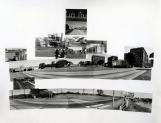 Credits:
Credits:Stan Denniston, Deadly Plaza/Recognition and Mnemonic, 1983. Installation view, detail.
51
Stan Denniston: Deadly Plaza/Recognition and Mnemonic7 November 1983
116 Spadina Avenue, 2nd Floor, Toronto
 Credits:
Credits:Stan Denniston, Deadly Plaza/Recognition and Mnemonic, 1983. Installation view, detail.
52
Stan Denniston: Deadly Plaza/Recognition and Mnemonic7 November 1983
116 Spadina Avenue, 2nd Floor, Toronto
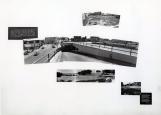 Credits:
Credits:Stan Denniston, Deadly Plaza/Recognition and Mnemonic, 1983. Installation view, detail.
53
Stan Denniston: Deadly Plaza/Recognition and Mnemonic7 November 1983
116 Spadina Avenue, 2nd Floor, Toronto
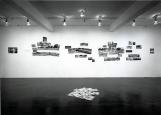 Credits:
Credits:Stan Denniston, Deadly Plaza/Recognition and Mnemonic, 1983. Installation view.